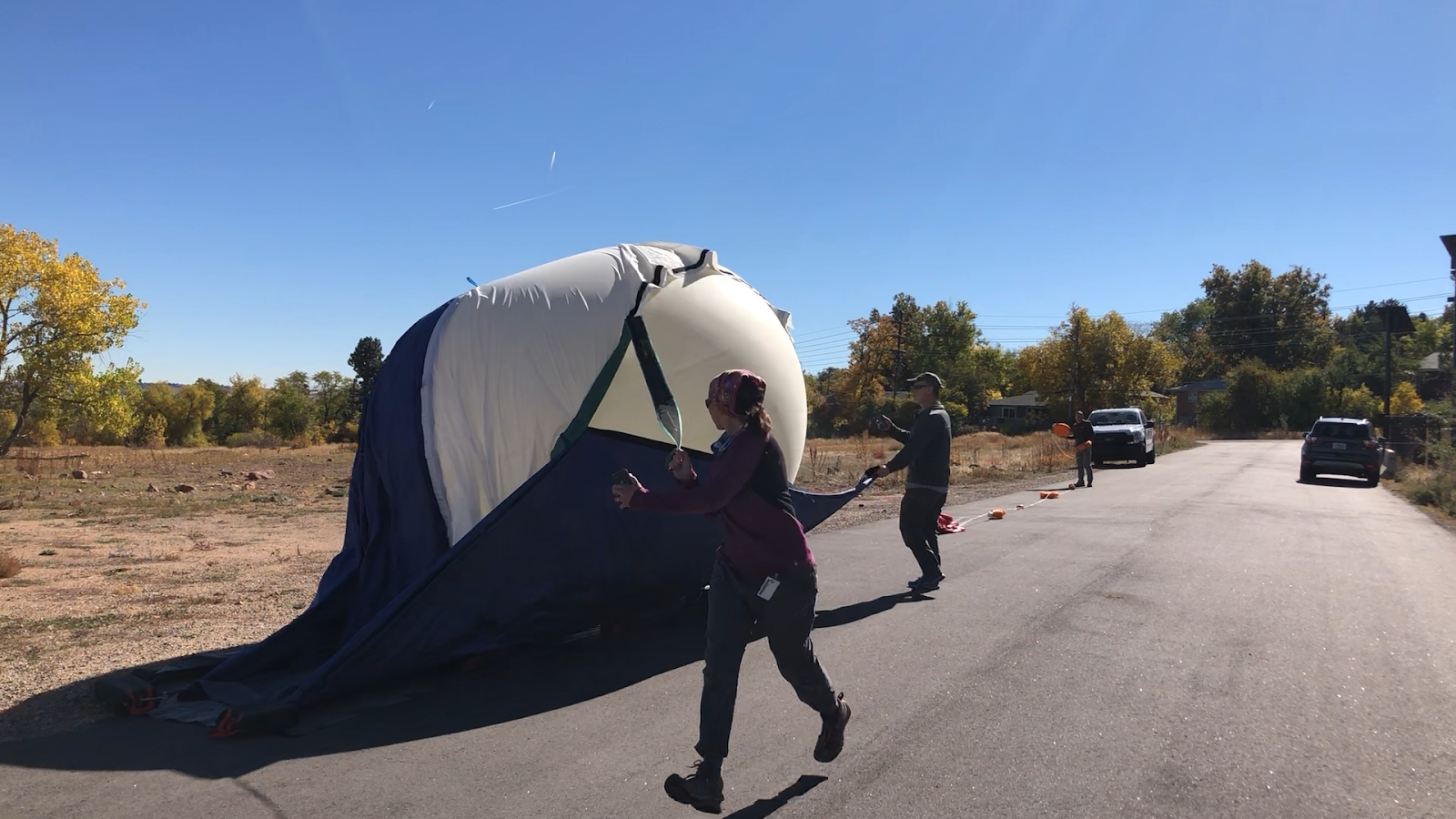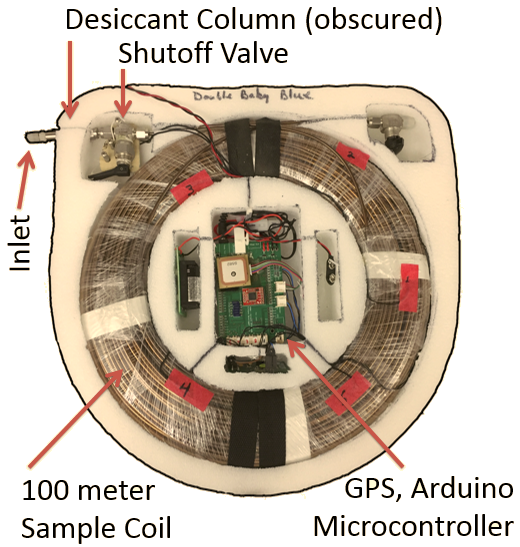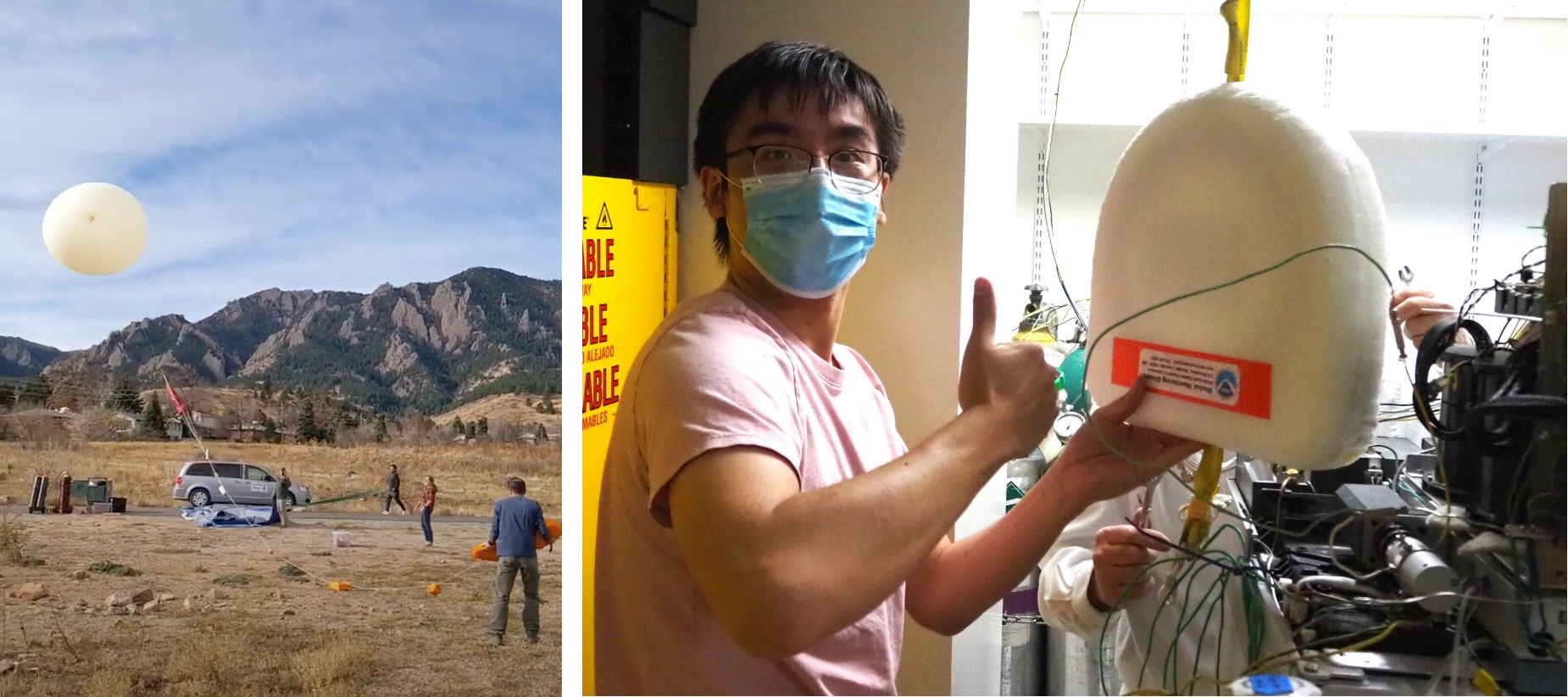GML’s StratoCore will open a new era to study the stratosphere
Redesigning AirCore to retrieve vertical profiles of new trace species.

GML and CIRES scientists are currently redesigning NOAA’s balloon-borne AirCore sampler and increasing the number of gases measured from these samples. The new design, called the StratoCore, will enable them to retrieve multispecies vertical profiles up to about 31 km above mean sea level (MSL), or about 100,000 feet.
“Routine sampling of long-lived trace gases in the stratosphere, along with GML’s 53-year observational record of stratospheric ozone, 40-year water vapor record, and NOAA/CSL’s more recent record of stratospheric aerosol observations will provide strong constraints on models of stratospheric composition and circulation.” said Bianca Baier, the lead GML scientist for this project. “This comprehensive measurement suite is critical for tracking and understanding Earth’s radiative balance.”
Before the StratoCore was developed, scientists could only measure stratospheric trace gases through high-altitude aircraft or large balloons with volumes of 4-8 million cubic feet. These sampling efforts are often expensive and personnel-intensive, costing millions of dollars. Thus, limited data is available.
The new StratoCore will open up opportunities to sample a higher volume of stratospheric air and analyze it for more trace gases at a much lower cost - around $5000 for each flight. These data will serve as a testbed for future globally-distributed intensive campaigns and provide a foundation for a future global reference network for key stratospheric species.
AirCore vs. StratoCore

GML routinely uses AirCore to collect continuous air samples that are measured for carbon dioxide, methane, and carbon monoxide. Like an ice core, this balloon-borne system samples a “core” of air vertically, capturing the variability of trace gases throughout the atmosphere. Once landed, the AirCore is brought back to the lab for measurements of trace gases and vertical profile retrieval.
Abiding by the Federal Aviation Administration’s regulations on allowable unmanned balloon payload weight, the AirCore design has limited its air sample volume. The maximum sampling height is about 25 km MSL. Yet, scientists need data from higher altitudes in the stratosphere (30-32 km MSL) to study trace gas distributions and relate these to changes in stratospheric dynamics.
GML scientists are tackling this challenge with the new StratoCore design. This design will modify the AirCore to have a longer tubing for collecting more air. In addition, GML scientists will configure the balloon string with lighter components in order to fly two StratoCores on one balloon string. Flights of the StratoCore will enable trace gas sampling from about 31 km MSL. GML scientists have adapted a gas chromatography analyzer to measure new trace gas species from the continuous samples in the StratoCore.
Looking forward

The GML team has already finalized the new design for the StratoCore system. Next, the team is looking to build out the design and start test flights in Boulder, Colorado this winter. The flight will be in coordination with NOAA’s GML and CSL collaborative ozonesonde, water vapor, and aerosol profiling flights.
“In addition to carbon dioxide, methane, and carbon monoxide, this newly-designed StratoCore system will allow us to sample a suite of long-lived gases in the stratosphere on a monthly basis.” said Jianghanyang Li, the CIRES postdoc at GML working on the StratoCore development and measurements.
“The concentrations of these long-lived gases inform the transportation history of stratospheric air. Analyzing such measurements could help us better understand the dynamics of the stratosphere - a crucial factor in constraining the radiation balance of the Earth.” Li said.
NOAA's recently established Earth Radiation Budget Initiative has allowed GML to pursue this breakthrough technology. This is a multi-year research initiative to investigate natural and human activities that might alter the reflectivity of the stratosphere and the marine boundary layer, and the potential impact of those activities on the Earth system.
